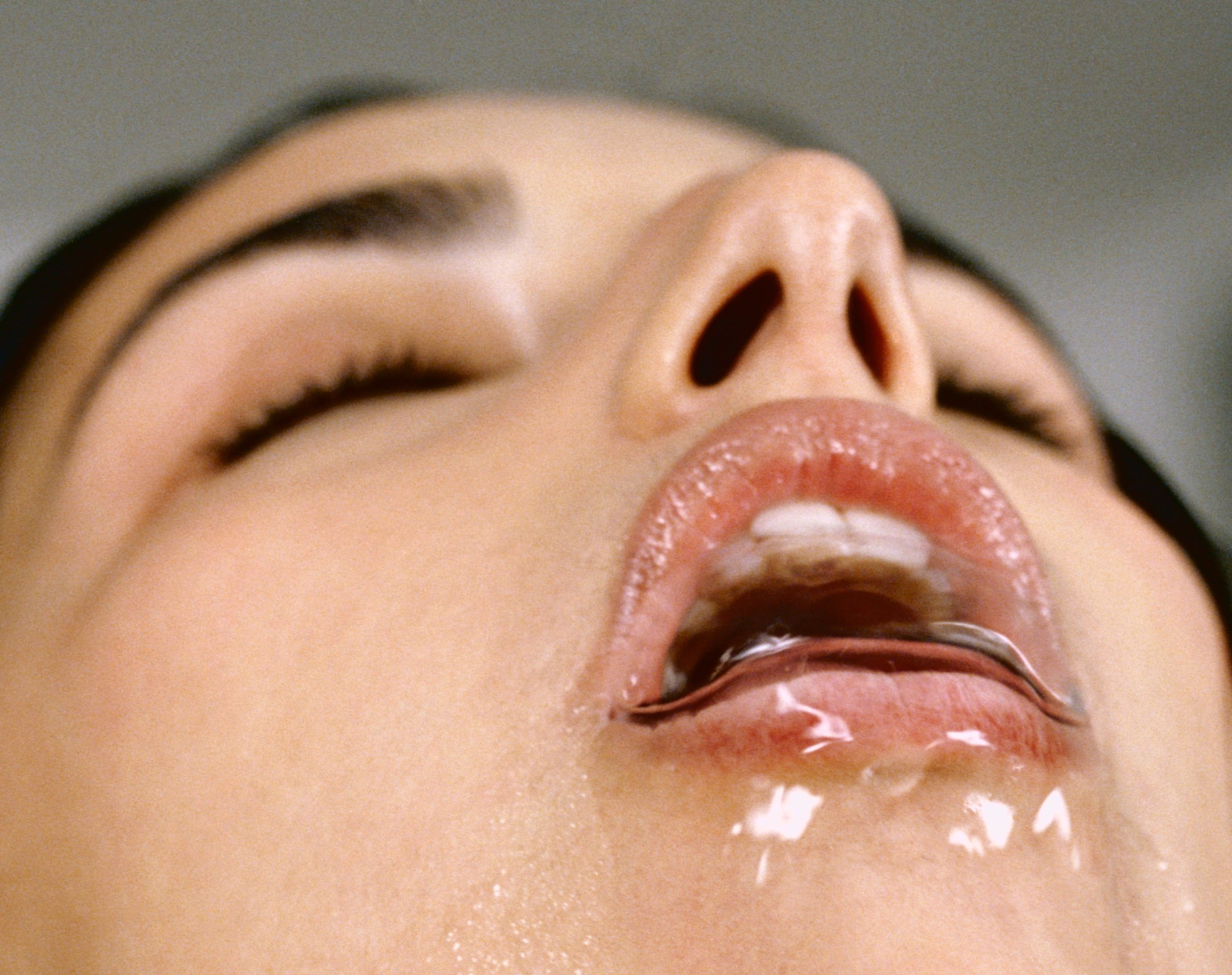This article originally appeared on i-D NL.
Athenian designer and performance artist Dimitra Petsa’s first collection, Wetness, consists of clothes which all appear to be drenched in sweat or pee, but are actually dry. The collection was part of her graduate MA show at Central Saint Martins and for it she had to come up with a special technique in order to make her dresses look soaking wet, dye sweat stains on T-shirts and created hand-blown glass nipple piercings in the shape of milk drops.
Dimitra is currently working on a sequel, Wetness Chapter 2: a collection of unconventional and bold maternity garments. After investigating the relationship between bodily fluids and shame, Dimitra now focuses her work on the archetypal roles of women within society. We sat down with her to talk about wetting yourself, the censorship of nipples on Instagram and her new collection.
i-D: I heard that you wet yourself in public in real life before starting work on for your first collection. Could you tell me a bit more about that?
Dimitra Petsa: Haha, that’s true. It wasn’t an accident however, it was part of my performance art. I did a BA in performance art before enrolling in the Fashion Design MA. I’m very interested in how our emotions are connected to the fluids in our bodies: sadness connects to tears, arousal to vaginal fluid, nervousness to sweat. After my research, I felt a need to do something with this. So that’s when I decided to pee my pants in public, in a crowded subway in Athens.
To me, that was the ultimate metaphor for letting go — both of my bodily fluids and of my shame. That’s how I finally came up with my first design: a pair of pants which are dyed in such a way that it seems someone peed in them. As a matter of fact, I got the models to wet themselves as well during the presentation of my collection.
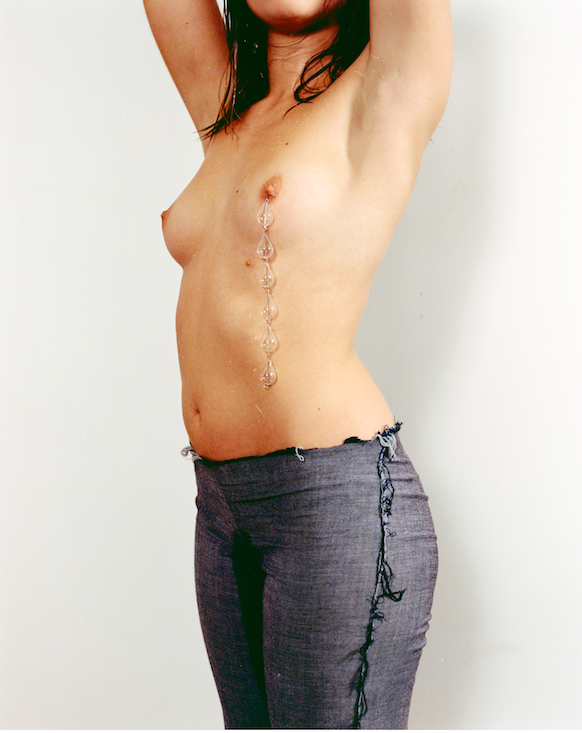
How did they feel about that?
Well, there are different stages that you’ll go through when you wet yourself. The first time I did it myself, I initially froze. The shame that you are “supposed” to feel is very much imprinted into your brain, even though I had thought out the script myself and rationalised the entire process. Those first few seconds, it was difficult to let the pee flow. But once you’re in the midst of it, you start to feel the warmth of the urine and that is strangely reassuring. In a way, you’re taken back to your childhood — to a time when you were not a woman yet, and there were no expectations surrounding your body. Afterwards, I felt very free and powerful, but at the same time I felt very naked. It was a very emotional process for the models too, but they also said it was an eye-opening experience for them too.
You used a special technique to make it look as if the fabrics are wet. How did you do that?
It took me months to develop and master this technique. I didn’t just want it to look realistic, but to feel realistic as well. The fabric has to feel ‘wet’ when you move in it, meaning that it shouldn’t feel too flexible and that it should sort of stick to your body, even when it’s not actually wet. I achieved this by soaking a special stretchy fabric in water and draping it over a mannequin in the shower. I then pinned the folds and air bubbles that arose in the fabric because of the water (I pinned about 600 of them, to be precise). Eventually, I sewed those lines into the fabric by hand. This technique, in combination with the stretchy fabric that I used, resulted in this wet-non-wet look.
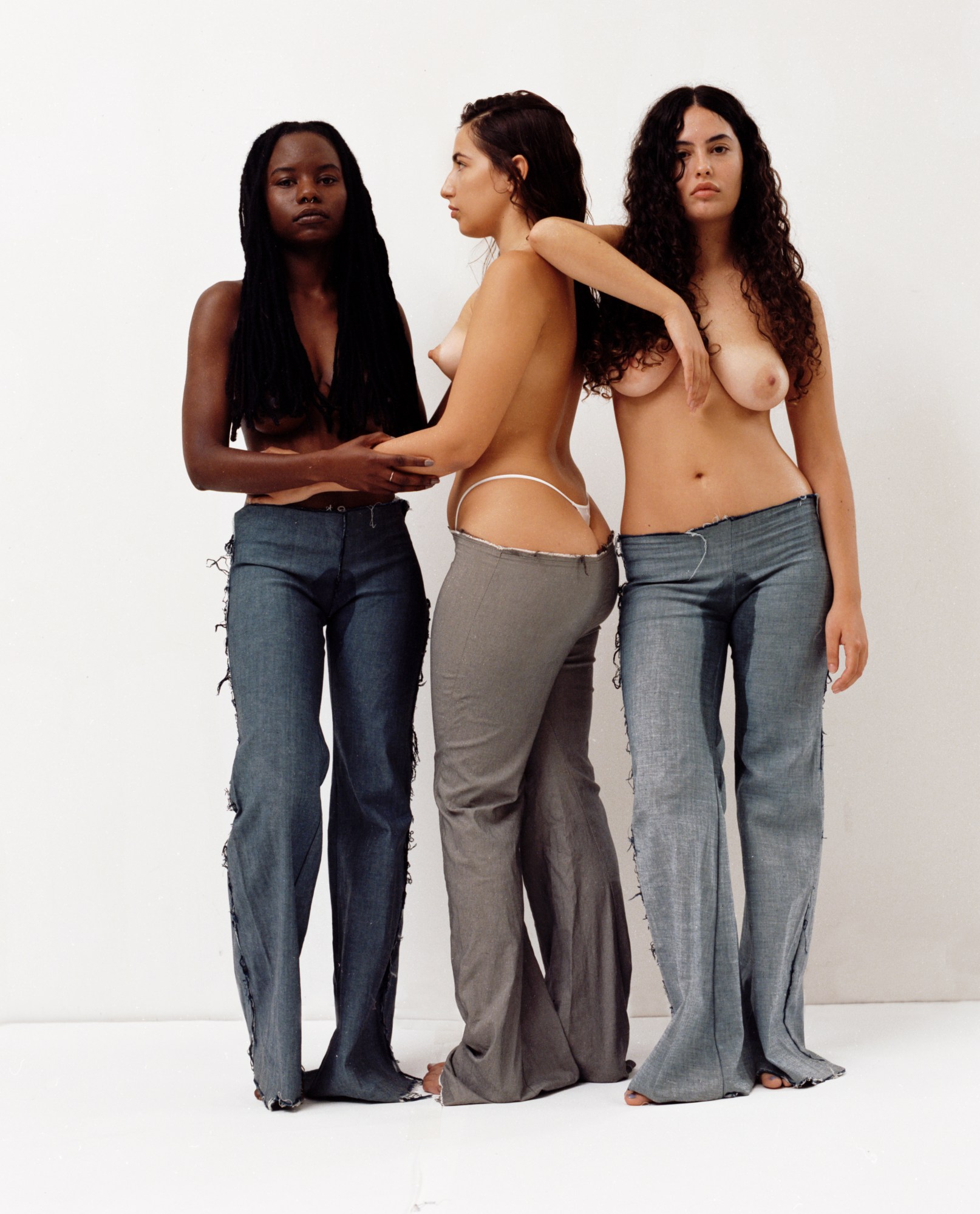
Your work is mainly concerned with the female body. Are you trying to spark a conversation with your designs?
I want my work to show that the female body is a political topic, one that is constantly monitored and censored. Take, for instance, the shame that is put on mothers when they want to breastfeed their babies in public. If you think about it, shaming is an effective way of keeping women under control. I think that’s one of the main reasons why shame is such a central theme in my work.
You mentioned sweat and urine, but what about tears? Do you get inspiration from that too?
I often cried during my studies. And I know that I wasn’t the only one: my classmates were constantly crying. Almost everywhere I looked, I saw people crying because of the amount of stress they were under. What struck me was that they were embarrassed; they covered their faces with their hands or hid somewhere in a corner. Since I’ve immersed myself in this project, I now also cry in public spaces. I don’t mind people seeing that I have emotions. Two days ago, I was sitting on the couch when I felt that I was going to cry. It was almost time to get my period, so I guess my hormones prevailed. But that was totally fine. I like to cry.
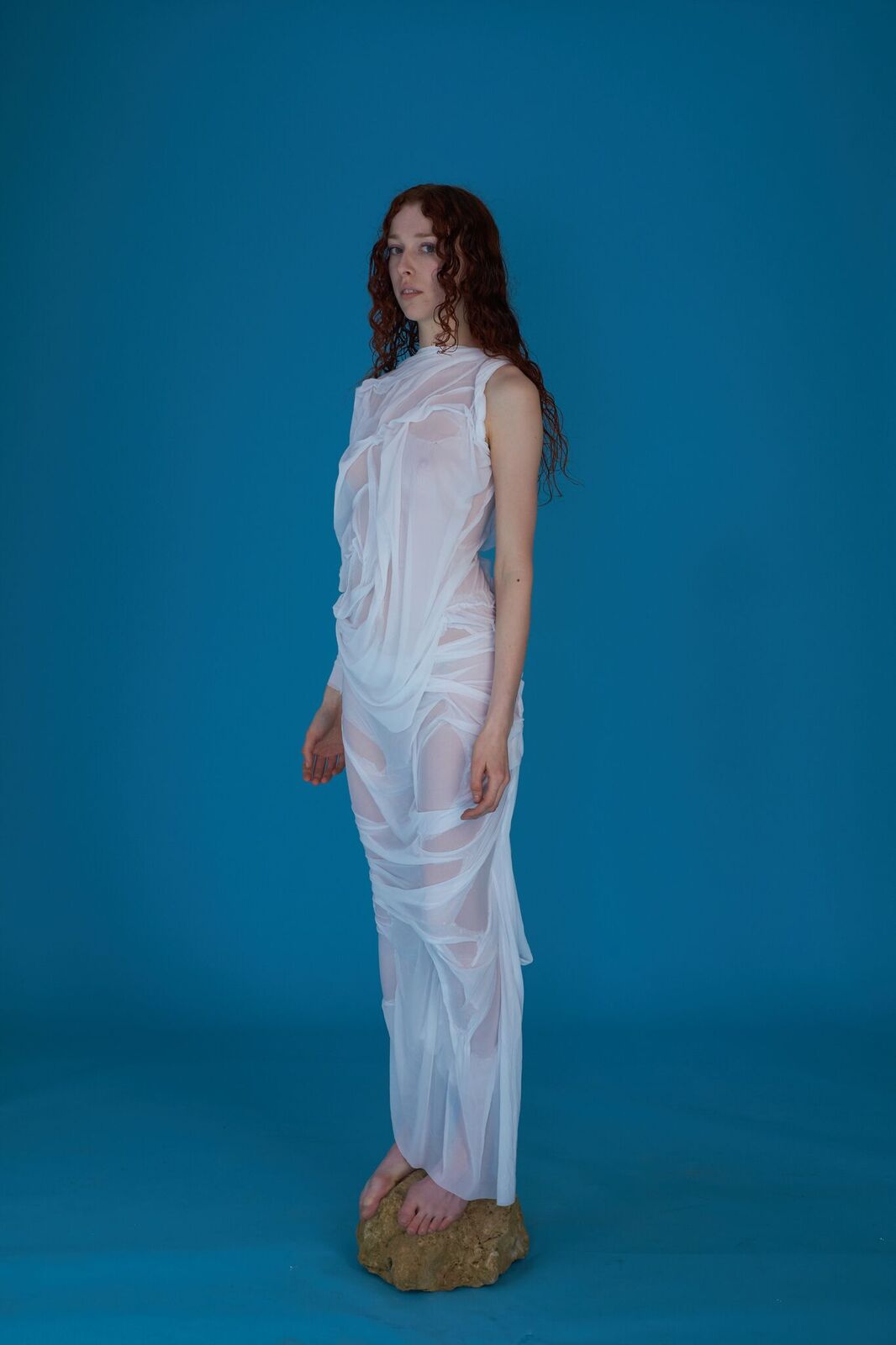
You post a lot of censored breasts on your Instagram . How do you feel about the censorship of the female body on social media?
The censorship of female nipples is something I will never be able to understand. To be honest, I think a belly button is much sexier than a nipple anyway. I think of social media as a reflection of the way the female body is treated in the real world. It feels like the female body has been cut into many different boxes, where one box is allowed to be visible and the other is not. What’s actually sort of funny is that a nipple can be visible when it’s shown on a photo of a woman giving birth or breastfeeding her child. But it’s not as if you have different nipples for different kind of occasions, right?

You speak out against censorship on Instagram, but as a designer and artist it’s nearly impossible to avoid using the platform yourself. What are your thoughts on that?
I do have a love-hate relationship with Instagram. On one hand, of course, it’s a place where you can make many connections and reach more people than you would with a small-scale exhibition.
On the other hand, my photos have been reported and deleted countless times. That’s why I nowadays blur every nipple, both in photos of men and women. Sometimes I wonder who it was that decided that a woman’s nipple is the most sexual part of the body. You can show your pubic hair and your butt, but you can’t show a nipple.
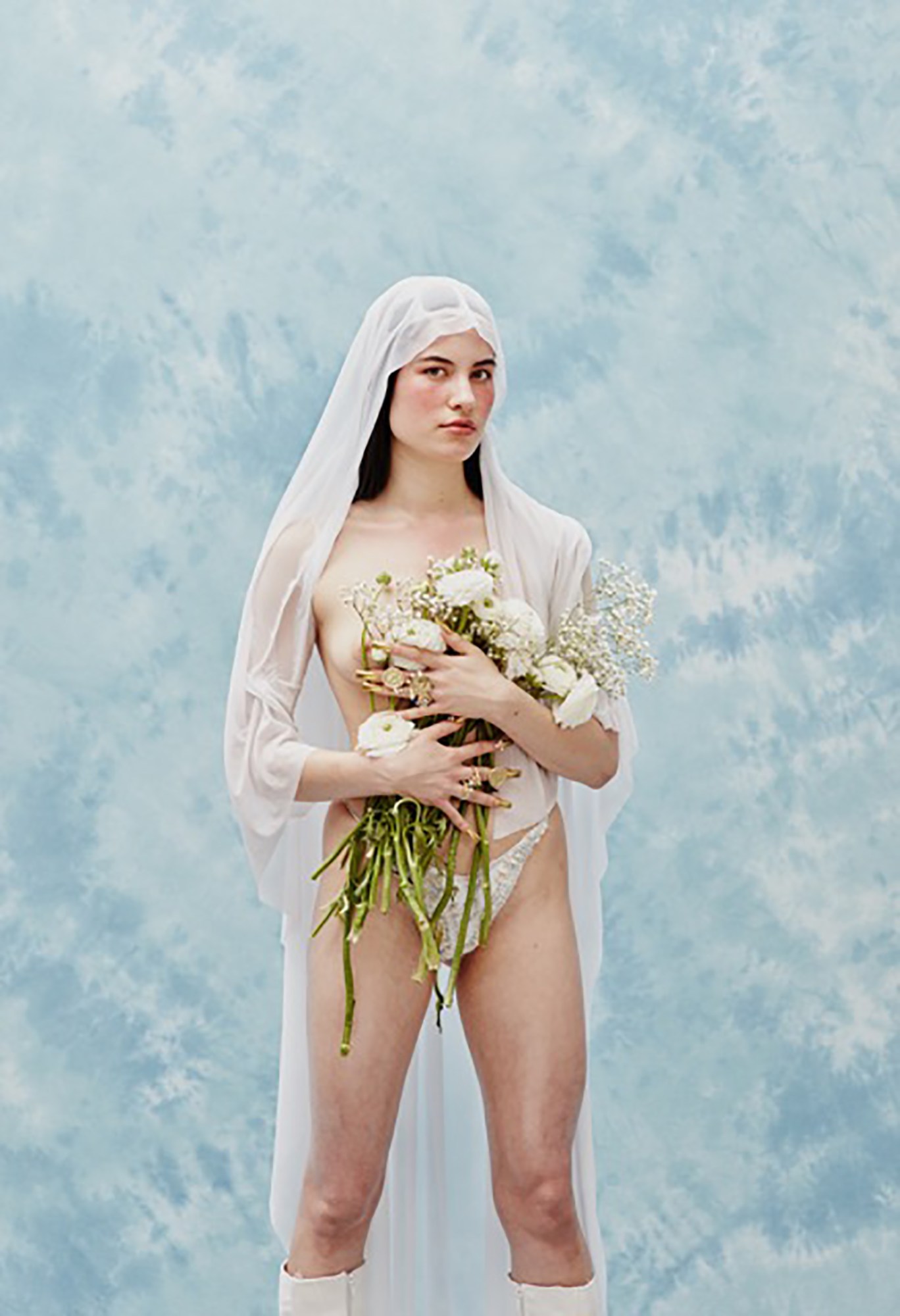
Your new collection is about to be revealed. Could you give us an idea for what to expect?
It’s the second chapter of Wetness, and I still use the same techniques as I did in my first collection. However, this time my collection will focus on pregnant women, using pregnant models as well. I want to play with the idea that pregnant women supposedly can’t be sexual. Lately I’ve been delving into the concept of ecstatic childbirth — a phenomenon in which women have orgasms during childbirth. Photos of this kind of childbirth are not allowed on social media, because they are considered inappropriate. To me, this proves once again that, as a woman, you’re given certain roles that are mutually exclusive. You’re a mother, a virgin, a sex symbol or an old spinster. It’s all pretty weird.
Credits
Photography: Nicholas Hadfield, Kate Iorga and Alexa Horgan
Styling: Kate Iorga, Wei Ting and Christelle Owona Nisin
Make-up: Mattie White
Nails: Sylvie Macmillan
Set Design: Ellie Koslowsky and Clara Boulard
Models: Louise Earwaker, Charlotte Dack and Jodie Chinn
Accessories made in collaboration with Hag Stone
